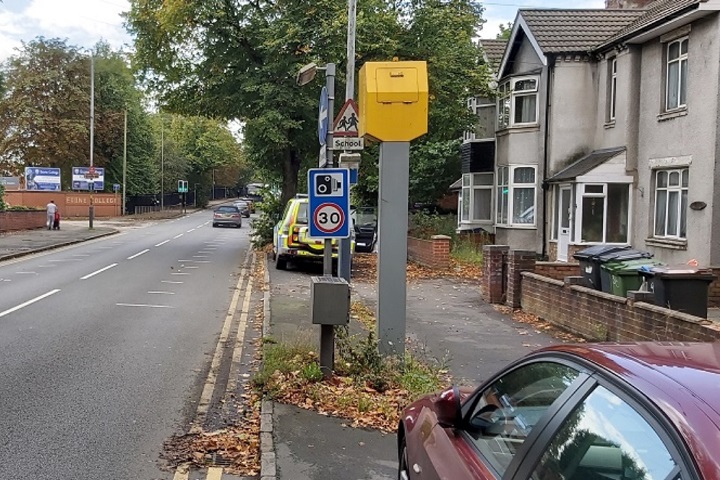
Drivers in Warwickshire are being warned about the dangers of speeding, after more than 5,000 offences were detected in just two weeks.
Led by Warwickshire Police, a two-week enforcement operation took place between 20 January and 2 February – looking to detect those who continue to speed on the county’s roads.
In total, 5,229 offences were recorded by a variety of methods, including mobile speed camera vans (168), static spot speed cameras (1,768), average speed cameras (2,270) and Community Speed Watch (193).
The enforcement formed part of a wider month-long campaign to educate drivers on the dangers of speeding and encourage them to change their behaviour.
Inspector Kirsty Clough, Warwickshire Police, said: “It is disappointing that over 5,000 people were still caught speeding as they drove through Warwickshire during the two week enforcement period despite the campaign to educate drivers around the dangers of speeding during the preceding seven days.
“Speed is one of the four biggest dangers whilst driving and the difference of a few miles per hour can be the difference between life and death.
“It is hard to understand why so many people continue to put their own life and the lives of others at risk by speeding on Warwickshire’s roads.”
In Warwickshire, 91 people were killed and 659 seriously injured in collisions where speed or loss of control was recorded as a contributory factor between 2017 and 2019.
Let’s look at this another way. Some drivers are aware of the two tolerances and allowances being given to motorists. One is from the EEC that know that speedometers can have a degree of inaccuracy and therefore gives an allowance to manufacturers to be within certain limits.
I believe that this is by 6.5km plus 10% of the speed shown and that all speedometers should read more than the actual speed show. That means in the UK that some drivers assume that their speedometer are faulty and that they can then drive at speeds of 30mph plus approx. 4mph plus 10%. That then means that they can drive at speeds shown on their speedometer of some 37/8 mph and actually be doing only 30 mph and thus not speeding.
Tests in the USA were done on some 60 cars and found that all but 5 were inaccurate up to the allowed limit the other 5 were accurate at the time of the test. That said of those 5 when their tyres are worn down they to would have some degree of inaccuracy also.
As a cars tyres wear down that inaccuracy and discrepancy in speed becomes greater and that’s in all cars. Perhaps that’s why the manufacturers have been giving this allowance in the first place. The speedo can be reading more accurately when the tyres are new but becomes more inaccurate later as the tyres wear down.
So in towns with a 30 mph speed limit we have some drivers that stick to their speedometer readings of 30 and others, assuming the allowance will drive up to that allowance but may be above limits as are or may be doing up to 38 mph on the same road. The police actually only gave a tolerance of 2 mph but can in principal report any driver caught and recorded by their devices for doing any speed over 30 mph. Speed cameras may be set with any amount of tolerance.
Michelle Worthington, Manchester
--2
According to the World Health Organization, road traffic injuries caused an estimated 1.35 million deaths worldwide in the year 2016. That is, one person is killed every 25 seconds.
Andy Appleby, Bolton
--2